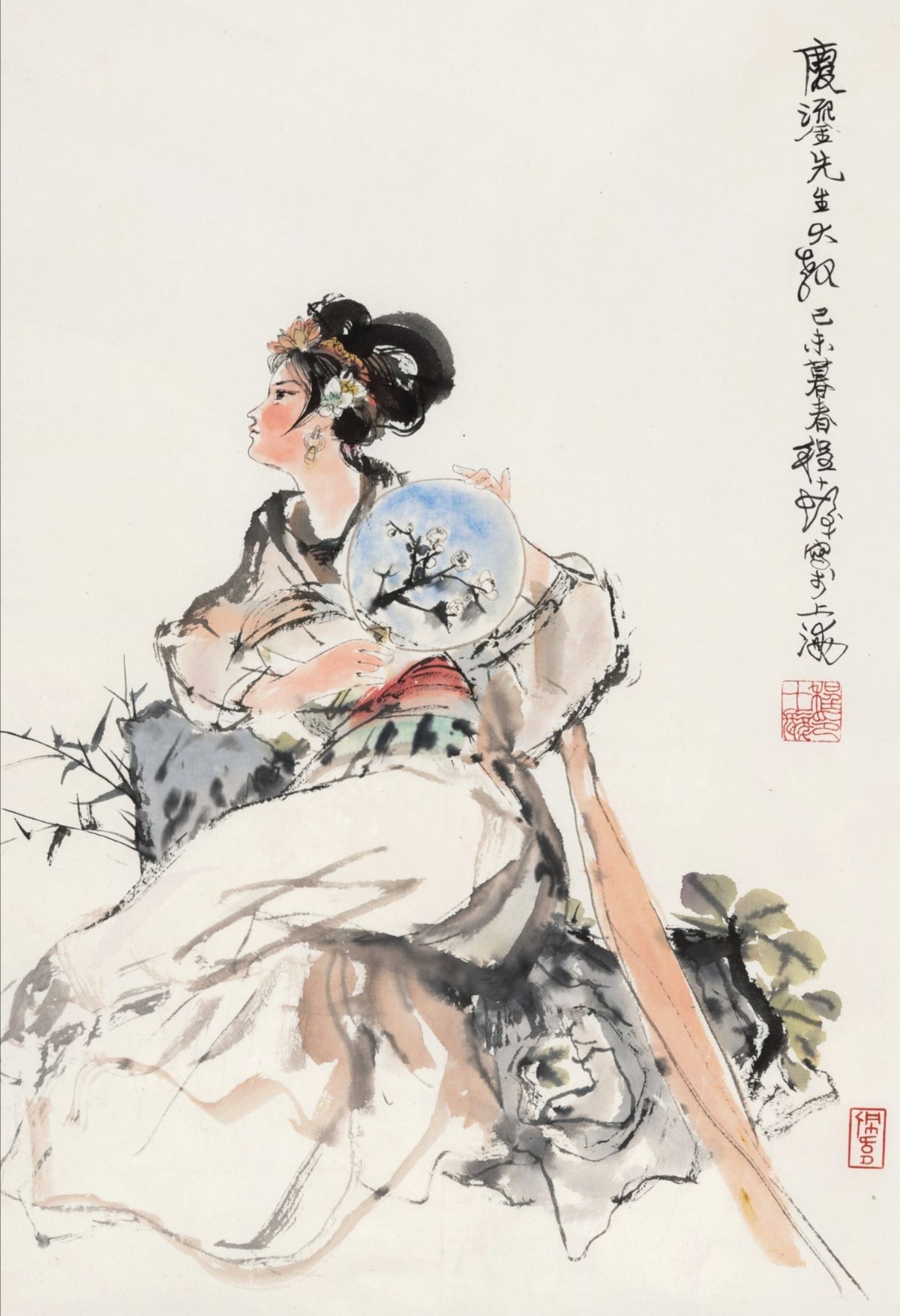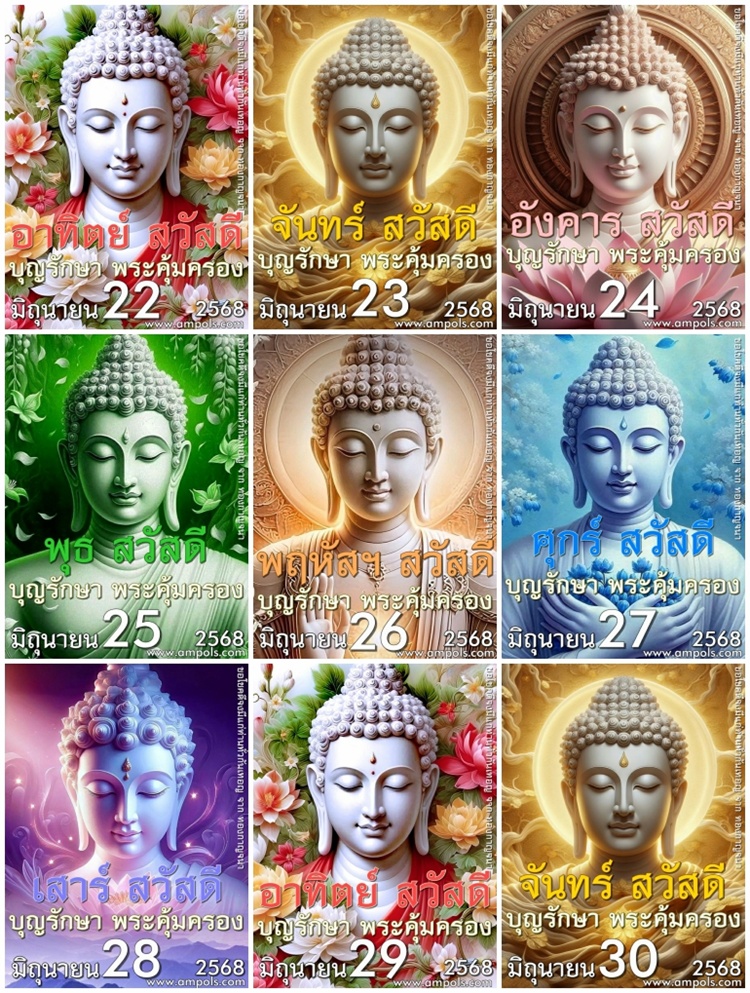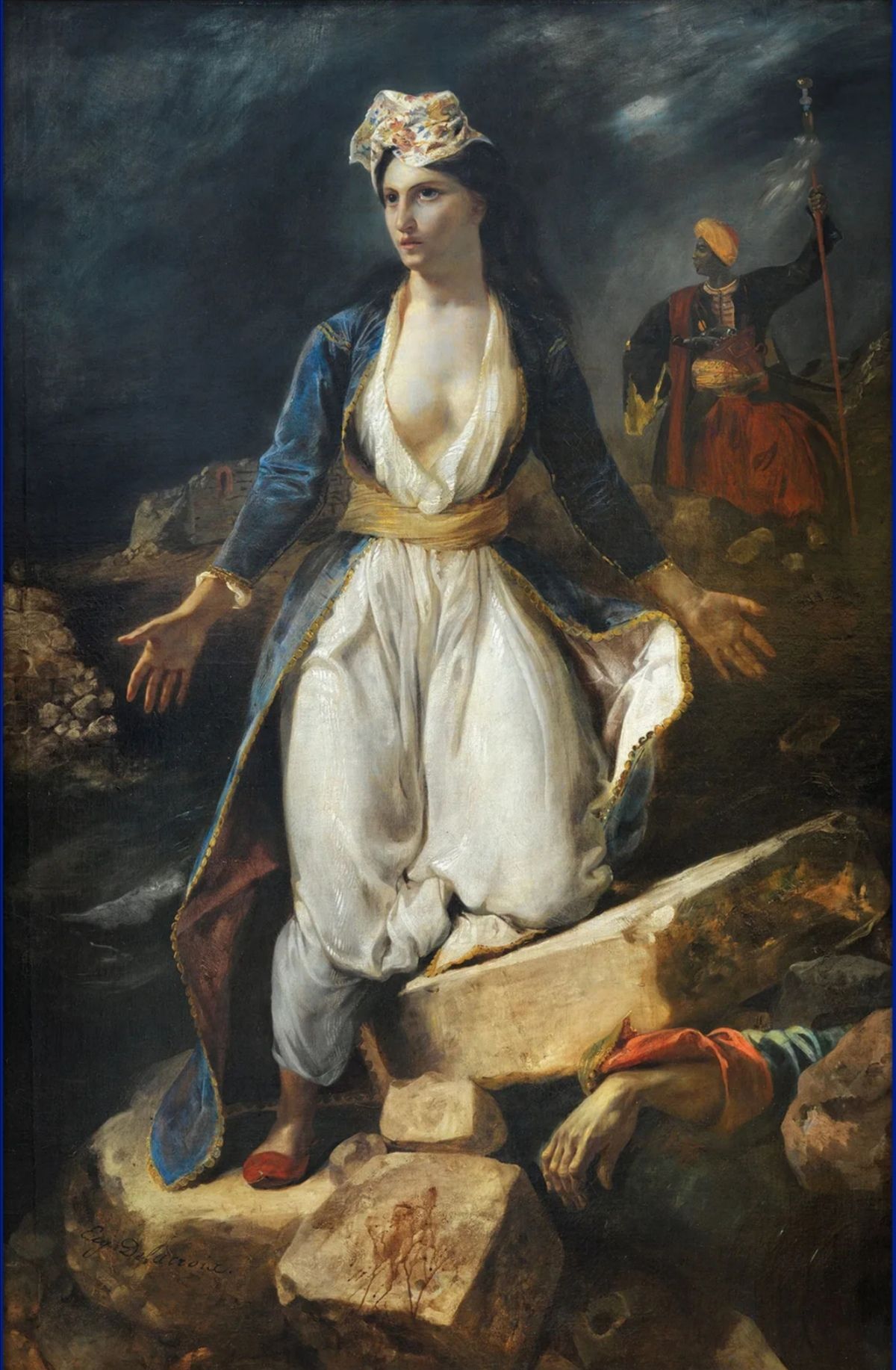Drama : Stories on the Stage Everyone enjoys a good show. A parade down Main Street, a circus under the “big top,” a variety program on the high-school stage, all these delight their audiences. One kind of show that most of us like is a Drama, or Play. Play may be seen “live” on the stage only. They are also enjoyed when reproduced in the Movies, on the Radio, or on the Television. In the theatre, under the spell of fascinating characters. We laugh at their troubles. We are swept along by their adventures or stirred by their discovery of love. The actors bring the play to life. While the curtain is up the play seem real and true. What is Drama? Drama comes from Greek words meaning “to do” or “to act.” A play is a story acted out. It shows people going through some evenful period in their lives, seriously or humorously. The speech and action recreate the flow of human life. A play comes fully to life only on the stage. On the stage it combines many arts; those of the auther, director, actor, designer, and others. A playwright may instruct or entertain or he may do both. His attitude toward his subject may be serious or light of combination of the two. His story may be intensive; a small area of life many be explored throughly. It may be extensive; free, wide ranging, and largelr on surface. A dramatist starts with characters. These people must be full, rich, interesting, and different enough from each other so that may one way or another they conflict. Form this conflict comes to plays. The plays has a beginning, which tells the audience what took place before the curtain went up and leads into the present action. The middle carries the action forward , amid trouble and complications. In the end the conflict is resolved, and the play comes to satafactory, but not necessary a happy, conclusion. One of the most important elements of play is the plot; what happens and why. The simple plot is a direct chain of events. The complex plot has an ending different from what the audiences expects, although cluse to the ending are planted along the way . The compound plot is made up of two plots working together. Comedy and Tragedy In the artistic scene, plays are classified as being either tragedies or comedies. The both difference between the two is in the ending. Comedies and happily . Tragedies end on an unhappily note. Why do people enjoy watching tragedies? Aristotle, the ancient Greek philosopher, offered one answers to this question in the katharsis theory. The tragedies, he said, act as a purge. It arouses our pity for the striken one and our terror that we ourselves many be struck down. As the play closes we are washed clean of these emotions and we feel better for the experience. A classical tragedies tells of a high and noble person who falls because of a “tragic flow,” a weakness in his own character. A domestic tragedies concerns the lives of ordinary people brought low by the circumstances beyond their control. Domestic tragedy may be realistic; seemingly true to life; or naturalistic; realistic and the seamy side of life. A romantic comedy is a love strory. The main characters are lovers; the secondary characters are comic. In the end of the lovers are always united. Farce is comedy at its broadest. Much fun and horseplay enliven the action. The comedy of manners, artifical comedy, is subtle, witty, and often mocking. Sentimental comedy mixes sentimenta emotion with its homor. Melodrama is not funny at all, but it does include comic relief and has happy ending. It depens upon physical action rather than upon character probing. Tragic or comic, the action of the plays comes from conflict of characters; how the stage people react to each other. These reaction make the play. Drama in Ancient Times Primitve meen acted out their stories of hunting and fighting. They were the first playwrights as well as the first actors. Early religious rituals were dramatic in form. In ancient Egypt the crowning of the pharaoh was celebrated by a play telling of devine birth. Pharaohs ordered resurrection plays to the performed above their tombs after their death. Ancient Greece was the birthplace of drama of the Western World. By the 5th century B.C. dramas were presented at religious festivals twice a year. These grew out of worship of the god Dionysus. Choruses of men were dressed in goatskins to represented satyrs; being who were half man and half goat, attending Dionysus. Tragedy get its name from the costumes and recitations of the choruses; tragos (goat) and ode (song). At the greater Dionysian festival three contests were held for dramatists. One was in comedy, one in tragedy, and one in the dithyramb (an elaborate choral ode sung by choruses of 50 singers). From the contests camee some of the world’s greatest dramatists. Little is known of them, and only a few plays survive. Those that remain are magnificent. Aeschylus (525-456 B.C.) wrote about 90 tragedies; only seven are known. An earl play was “the Suppliants”. In it chorus, a group of 15 singers who remain on-stage, is most prominent. In “the Seven Against Thebes’ the tragic hero first appears. “Oresteia” is the fully developed play. Aecchylus was the first to use a second actor on the stage. Sophocles (496-406 B.C.) wrote about 125 tragedies. Only seven are left. His plays are calm and nobly tragic, expressing the “golden mean” of Greek philosophy. Sophocles was the first dramatist to used the third actor. Perhaps his greatest play is “Antigone”, which retells, in part, the ancient, tragic, Oedipus legend. Of tha approximately 90 plays of Euripides (480-406 B.C.), 18 remain. His tragedies are about men, not gods. He explane the sorrow of suffering in human existance as few writers since have done. One of the his best plays is “Trojan Women.” Aristopanes (448?-385? B.C.) was the funniest Greek comic dramatist. “The Clouds” ridicules the philosopher Socrates, and “the Birds” makes fun of Euripides. The comedies of Menander (342-291? B.C.) are kind of sympathetic but really humorous in a boisterous sense. Only completely play still exists. Rome copied Greece, but not very well. There was much dramatic activity but few notable dramatists. Plautus (254?-184 B.C.) and Terence (185?-159? B.C.) followed Menander’s pattern in comedy. Seneca’s (3? B.C-65 A.D.) nine tragedies were written to be read. Most of them are impossible to stage. Drama Rediscovered in the Middle Ages In the late Roman Empire the drama was almost forgotten. People prefered the bloody fights of gladiators with wide beasts and low clowning of entertainers. Then the rising power of the Christtain Church was thrown against all such entertainment. The theatre was banned for nearly a thousand years. During the Middle Ages life centered around the cathedral. The priests has to teach an uneducated peple the Bible stories. So they introduced small palylets into their church services. The first of these was the “Quem quaerists”, acted out by the priests at Easter. It had only in three Latin lines. Whom do ye seek in the sepulchre? Jesus of Nazareth who was cricified, O Heavenly One! He iis not there: He has risen as He siad. Go annouce that he has arisen from the sepulchre. This was the beginning of drama in the modern world. Because so few people understood Latin, more and more of their own language was used. Finally, the plays were condidered too unreligious to be acted in the church. They were move to the cathedral steps and yard. Here began the elaborate Mystery Cycles which told stories from the Bible in dramatic form. Later new religious dramas were found in the Miracle Plays. Next to come were the Morality Plays, which dealt with abstract virtues and vices. Drama of the Renaissance In the Golden Age of Spain two playwrights won immortally. They were Lope Félix de Vega Carpio (1562-1635) and Pedro Calderón de la Barca (1600-1681). Lope was immensely prolific. He wrote about 2,200 long and short plays-romances, religious dramas, historical plays, tragedeies, and comedies. More than 500 have survived. Perhaps his greatest is the Sheep Well’, about a reasant village which revolts against its ruling nobleman. About 120 plays by Calderón survive. “Life is a Dream” is the best known work. It tell of the young prince whoo finally overcomes a curse and becomes a good king. The Elizabethan Age in England showerd the world with the burst of brilliant playwrights. The age was ushered in by such dramatists as John Lyly (1554?-1606), wgo wrote “Endimion, the Man in the Moon” ; Thomas Kyd (1558-94), author of “the Spanish Tragedy” ; and Robert Greene (1560?-92), writer of “Friar Bacon and Friar Bungray”. The greatest of these early Elizabethans was Christopher Marlowe (1564-93). He wrote the first notable Elizabethan plays. His best is :Doctor Faustus”, in which Faustust sells his soul to the devil in exchange of years of power on earth. William Shakespere (1564-1616) is the acknowledged master of drama not only for his age but for all time. Intragedy, comedy, tragicomedy (or “bitter comedy”), and historical (or chonicle) drama, he is superb. His plays are alive and glowing, filled with characters whom real people admire and envy. His plots are filled with action; his drana plays even better than they read. Above all, his genius penetrates the human heart and mind and shows man as he is, in all his misery and glory. Of this tragedies, “Hamlet” is the favorite, with several others nearly as popular. Perhaps his most successful comedy is “A Midsummer Night’s Dream”. “The Tempest” is the most famous tragicomedy. “Richard III” and “Henrry IV” are histories that have been made into motion pictures. In all these, Shakespere demonstrates the humanity of his characters, the believableness of his plots, and the magic and the music of hiis language. After the Shakespere came lesser men, good playwrights but failing to the measure up to the master. Ben Johnson (1573-1637) used the comedy of homors in “Volpone”, “The Alchemist”, and others. “Homors” were eccentricities, and Johnson had much much fun with them. Thomas Dekker (1570-1641), whose happiness was not soured by years of adversity, wrote sunny comedies, especially “The Shoemaker’s Holiday”. The plays of Thomas Middleton (1570?-1627) were roaring farces about middle-class life. “A Chaste Miad in Cheapside” is one of his best. John Webster(1580?-1625?) wrote the two great tragedies ; The Duchess of Malfi” and “The Wite Devil”. Webster excelled in scenes of horror and pathos” The 17th Century in France and England Classical tragedy was revived in France during the 1600’s. The Unities - of times, 24 hours or less, of place, a single scene; of an action, a single plot - described by Aristotle were obeyed. The works of two French tragic dramatists still live. Pierre Corneille (1606-84), wrote “The Cid”. about the medieval Spanish hero, and “Oedipe”, about legendary Greek characters. Jean Baptiste Racine (1639-99) also wrote of legendary ancients. but with more humanity than Corneille. Among his plays are “Andromaque” and “Phédre”. Molière (1622-73), whose real name was Jean Baptiste Poquelin, ranks second only to Shakespere. He specialty was comedy, and such plays are “Tartuffe” and “The Misanthrope” shom his comic geniius. Molière aimed barbed shafts at snobbery. He hit his target and made the whole French nation laugh. In England, in 1642, the Puritans closed the theatre. In 1660, when Charles II was restored to the throne, the theatres were reopened. The Restoration was the period of busy theatre activity rather than dramatic productivity. The Restoration playwrights developed the comedy of manners. This was the sophisticated, witty comedy which amused the intellect but did not warm the heart. Sir Goerge Etherege (1635?-91) wrote the frivolous “The Man of Mode, or Sir Fopling Flutter)”. William Wycherly (1640?-1716) was the author of “The Coungtry Wife” and “The Plain Dealer”. Both are acid and sardnic. The finest Restoration dramatists was William Congreve (1670-1729). In four comedies, all written before ha was 30, he created a world completely gay and completely unreal. His best play. “The Way of the World”, was his last. John Dryden (1631-1700), author of many tragedies and comedies, stands a little outside the main stream of Restoration comic acctivity. English Sentimentality and German Romanticism Restoration sophistication lasted only the little while. In England the 18th Century opened on a sentimental note in drama. The comic emphasis was on warmth. kindliness, and agreeableness rather than on wit. Tragedy was equally sentimental. The age saw the beginning of bourgeois, or domestic, tragedy. The central tragic character was no longer a man of high purpose caught in the web of his one fatal weakness. He was now a poor creature suffering and dying because ofo a fate he did not understand and could not control. Oliver Goldsmith (1728-74), jack of writing trades, wrote an amusing farce “she Stop to Conquer”. The two major commedies of Richard Brinsley Sherridan (1751-1816) were “The Rivals” and “The School for Scandal”. The combine sentiment and wit to offer great entertainment. A historically important tragic dramatist was George Lillo (1693-1739). “George Barnwell”, or, the London Merchant’s is about a weak young man who succumbs to evil woman and murders his uncle. This was the first true domestic tragedy in English. In Germany, Gotthold Ephraim Lessing (1729-81) revived a theatre suffocated by classicism. As dramatic critic and playwright he effected great reforms. Fredrich von Schiller (1759-1805) was the first German remantic playwright. His best play is “Wallen stein”, although “Williem Tell” is better known. Johann Wolfgang von Goethe (1749-1832) is the greatest of all German writers. “Faust”, begun when Goethe was young and finished only in his last birthday, is dramatic distillation of his whole philosophy. It is almost unplayable, but it makes magnificent reading. The Beginning of Modern Drama Modern drama starts with Henrik Ibsen (1828-1906), the earliest and still one of the greatest of modern playwrights. In such plays as “Peer Gynt”, “A Doll’s House”, “Ghosts” and “Hedda Gabler”, this Norwegian dramatist put people into dramatic situation with strongly plotted conclusions. His play are mainly realitic but they always have overtones of great poetry. Main immediately sucessful than Ibsen was his fellow Norwegian Björnstjerne Björnson (1832-1910). His best play is “Beyond our power”. August Strinberg (1849-1912), of Sweden, was first realist and later surrealist. His keen sense of social psycology produced “The Father”, hia later madness resulted in “The Ghost Sonata”. The early modern playwrights in France stressed both an extreme naturalism and an extreme romanticism. Émile Zola (1840-1902) dramatized his own novel “Thérèse Raquin” as the first real mnaturalistic “slice of life” play. “Count Maurice Maeterlinck (1862-1949), a Belgian, wrote of the long ago and far away in “Pelléas and Mèlisande”. Edmund Rostand (1868-1918) was rousing romantic in :Cyrano de Bergerac”. In Italy Luigi Pirandello (1867-1936) did well in “Right You Are If You Think You Are” and rose to great heights in “Six Characters in Search of an Author”. The first great modern German dranatist was Gehart Hauptmann(1826-1946). He struck home with “The Weavers”.. play that combined naturalistic technique with the flaming social issue. His repressed romanticism finally awoke in “The Sunken Bell”. Frank Wedekind (1864-1918) bought an obsession with naturalism to such plays as “Awakening of Spring” and “Earth Spirit”. Ernst Toller (1893-1939) wrote a massive study of revolution in “Man and the Messes”. The Austrian Arthur Schnitzler (1862-1931), a doctor by profession, probed dramatic problems with psychoanalytic tools. His “Anatol” series is still popular. Ferenc Molnar (1878-1952) was Hungaryq’s leading playwright. His most famous drama “Lilliom”, was adapted by two Americans Richard Rodgers and Oscar Hammerstein II, as the Musical Play and movie “Carousel”. Karel Capek (1890-1938), a Czech, created a great stir with the symbolic “R.U.R” (abbreviation of “Russem’s Universal Robots”. The Drama in Czarist Russia The plays of 19th-century Russian dramatists are strong character studies. Their plots are weak and inconclusive. Often the situation at the end is the same as it was in the beginning. The characters recognize the need of growth and change; they make tentative gestures toward achieving it; but in the end they fall back on thier ols ways. This is the Russian play formula, repeated time after time. In the hands of the masters it showed the strenghts and weakness of the Russian character. The first notable Russian dramatist was Nikolai Gogol (1809-52). He won his reputation with “The Inspector-General”, a merry satire on village corruption. Ivan Turgenev (1818-83), a Great Russian novelist, wrote one memorable play, “A Month in the Country”. Count Leo Tolstoi (1828-1910), world famous a s a novelist, wrote “Power of Darkness” and “Redemption” tp express his fundamentalist relegious views. The greatest Russian playwright was Anton Chekhov (1860-1904). In such plays as “The Sea Gull”. “The Cherry Orchard”, “Three Sisters”.a nd “Uncle Vanya”, he set his characters against a background of changing times. The tragedy is that the characters cannot change too. Their only solution is to live as best they can. Chekhov’s plays well illustrate the general trend of Russian drama to stress character analysis rather than plot and action. Leonid Andreev (1817-1919), mystic and fatalist, wrote “He Who Gets Slapped”, which continues to arouse interest. Maksim Gorki (!868-1936), in “The Lower Depts”, offerd a starkly naturalistic, revolutionary drama. The Irish Renaissance Many Great playwrights helped bring about the Irish Renaissance in litterature. Its aim was the revive the old Celtic language and stories. The rebirth began in the 1880’s, and its first notable dramatist was William Butler Yeats (1865-1939). His “Deirdre” and “Cathleen ni Houlihan” were poetic re-creation of Irish legends and patriotic themes. The genius of this group was John Millington Synge (1871-1909). Synge’s first play was “In the Shadow of the Glen”. which told of the family troubles of peasant woman. It was followed “Riders to the Sea”, a tragedy, and “The Playboy of the Western World”, his finest play. This is the story of a young man who boasts of having murders his father. The oldman appears unexpectedly and deflates his son. The last great writer of the Irish Renaissance was Sean O’Casey (1880-1964). His “Juno and the Paycock” mixes comedy and tragedy. “The Plough and the Stars” is the tragic movement of the real-life Easter Rebellion in Ireland in 1916. “Purple Dust” is the comedy. English Drama Today Modern British drama brgan as a revolt against the prevailing smugness of the Victorian Era. The real evils and tragedies of English life were hidden from view by the self-satisfied attitudes of thee upper classes. The dramatic revolt started slowly but soon gained speed. Henry Arthur Jones (1851-1929) was the first notable playwright of this movement. “Michael and His Lost Angel” deals with religious hypocrisy. Arthur Wing Pinero (1855-1934) wrote “The SecondMrs.Tanqueray”, a tragedy about a woman who cannot escape her past. Oscar Wilde (1856-1900), the wittiest man of his day, wrote one play which has remained alive, the polished, superficial, but still delightful “The Importance of Being Earnest” The long lifetime oeff the greatest of modern playwrights spanned this era. George Bernard Shaw (1856-1950) excelled in the world of ideas. He could make a host of contrary notions acceptable by the brillian of his presentation. His galaxy is large. “Candida”, “The Devil’s Disciple”. “Ceasar and Cleopatra”, ‘Man and Superman”, “Major Barbara”, “The Doctor’s Dilemma”, “Androcles and the Lion’, “Pygmalion” (and its musicl version, My Fiar Lady’), “The Apple Cart”, “Saint Joan” and some of his witty and thought-provoking plays, Shaw’s lengthy prefaces to his dramas explain and enhance the ideas in the plays. Sir James M.Barrie (1860-1937) combined sentiment with skillful playmaking in “Peter Pan” and “What Every Woman Knows”. John Galsworthy (1867-1933) was for the time England’s leading tragic dramatist. His “Justice” is a harsh condemnation of law untempered by mercy. W.Somerest Maugham (1874-1965) wrote drama as well as fiction. His best plays are “The Cycle” and “The Constant Wife”. Noel Coward (1899-1973) worte sophisticated comedy in “Private Lives” and “Design for Living”. The American-born T.S.Eliot (1888-1956) projected his poetic genius into blank verse dramas of high order. “Murder in the Cathedral”, “The Cocktail Party” and “The Confidential Clerk” are plays that conceal deep meaning beneath surface simplicity. Christopher Fry (born 1907) also uses verse effectively in “The Lady’s Not for Burning” and “A Sleep of Prisoners”. John Boynton Priestley (born 1894) combined tehe careers of novelist and playwright, “Dangerous Corner” was his first od about 40 successful plays. Robert Cedric (born 1896) wrote “Journey’s End”, a memorable play about English soilders in the World War I trenches. Terence Rattigan (1911-77) won his first commecial success with “French Without Tears”. This was followed by such long-run hits as “The Winslow Boy”, “The Browning Version”, and “The Deep Blue Sea”. Peter Unstinov (born 1921), actor, producer, and playwright, madee his name known with “The Love of Four Colonies”, a delightful romantic comedy. Modern French Plays French drama today follows no set pattern. Each playwright has his own story to tell. He chooses whatever style, realistic or synbolic, is the best suited to the story. For example, Jean Giraudox (1882-1944) used symbolism and fantasy in “Amphitryon 38” and “Tiger at the Gates”, both set in ancient Greece; “The Madwoman of Chailot”, about a group of varied Parisian characters; and “Ondine”, and “adult fairy tale”. Realism marked the plays of John Paul Sartre (born 1905). Among them are “The Flies” and “No Exit”. Jean Cocteau (1889-1963) master of many arts, wrote in any styles. “The Eagle Has Two Heads” is a classic tragedy of the widowed queen of Bavaria and her young lover. Jean Anouilh (born 1910) used the ancient Greel Legend of Oedipus in “Antigone”, the Joan of Arc story in “The Lark”, and a modern background for “Waltz of the Toreadors”. Drama in the United States Nou until the 1880’s did not noteworthly drama begin to appear in the United States. Before that time there was a fair amount of theatrical activity. The first play written by an American and perfomed by a professional company was “The Prince of Prathia” (produced 1767), by Thomas Godfrey (1736-63). The first play by an American on an American theme was “The Contrast” (1787), by Royall Tyler (1757-1826). George Aiken (1830-76) dramatized Harriet Beecher Stowe’s “Uncle Tom’s Cabin” in 1852. Dion Boucicault (1820-90), Irish by birth, write many stirring melodramas among them “The Octoroon”. Several playwrights of the latr 19th and early 20th ccenturies prepared the way for modern realistic drama. James A.Herne (1839-1901) wrote “Margaret Fleming”, an honest treatment of a wife’s reaction to her husband’s adultery. “The New York Idea” by Langdon Mitchell (1862-1935) takes an irreverent attitude toward marriage. “The Nigger” by Edward Sheldon (1866-1946) anticipates the recial problem plays of later years. Around 1920 American drama became a major litterary form, thanks largely to Eugene O’Neill (1888-1953), America’s greatest playwright. O’Neill broke with theatrical conventions to experiment with a variety of techniques. “Beyond the Horizon” and “Desire Under the Elms” are powerful, realistic drama, using the language of ordinarry people. “The Emperor Jones” is the romantic drama about the destruction of the self made Negro dictator. “The Hairy Ape” and “The Great God Brown” are symbolist dramas. Characters in “Strange Interlude” make heavy use of the asides and soliloquies to reveal their thoughts. “Macro Millions” is a satire on big business. “Mourning Becomes Electra” is a New England version of the classical greek tragedy “Oresteia”. Other playwrights who made a significant contribution to American drama in the 1920’s include Elmer Rice (1892-1967), whose “The Adding Machine” is a study of a regimented mind in the regimated society. “Street Scene”, also by Rice, pictures life in New York City slum. George Kelly (1887-1974) wrote “Craig’s Wife”, an unflattering portrait of the American middle-class woman. Maxwell Anderson (1888-1959), who later became known for his verse dram, collaborated with Laurence Stallings (1894-1968) on “What Price Glory?”, an antiheroic play about World War I. Sidney Howard (1891-1939) wrote “They Knew What They Wanted”, his masterpiece about mail-order bride. During the 1930’s Sidney Kingsley (born 1906) captured the mood of the depression years with “Dead End”, a vivid study of slum life, and Clifford Odets (1906-63) dramatized the struggles of working-class people with “Waiting for Lefty”, “Awake and Sing”, and “Golden Boy”.Lilian Hellman (born 1905) wrote her first plays on poisoned human relationships (‘The Chilldren’s Hours’, ‘The Little Foxes’). Irwin Shaw (born 1913) combined social protest and fantasy in “Bury the Dead”. During the decade Robert E.Sherwood (1806-1975) developed new dramatic techniques in that most American of plays, “Our Town”. William Saroyan (born 1908) brough the stage “The Time of Your Life”, a unique blend of sentiment and fantasy. Outstanding comedies were written by S.N.Behrman (1893-1973) (‘No Time for Comedy’) and Philip Barry (1896-1949) (‘The Pheladephia Story’). George S.Kaufman (1889-1961) collaborated with Most Hart (1904-61) on the comedies ‘You Can’t Take It with You” and “The Man Who Come to Dinner”. In the 1940’s and 1950’s the American stage was dominated by two of its major dramatists, Arthur Miller (born 1915) and Tennesse Williams (born 1911). “Death of the Saleman”, the tragedy of an ordinary man destroyed by false values, is Miller’s masterpiece. Two of Williams’ finest psychological dramas are “The Glass Menageries” and “A Street Car Named Desire”. An important playwright of the 1950’s was William Inge (1913-73), whose dramas of neglected small-town people include “Come Back, Little Sheba”, “Picnic”, “Bus Stop” and “The Dark at the Top of the Stairs”. Plays by William Branch (born 1927) , Louis Peterson (born 1922), and Lorraine Hansberry (1930-65) reflected the increased recial conciousness of the 1950’s. Branch’s “A Medal for Willie” deals with the effect of the soilder’s death on his family. Peterson’s “Take the Giant Step” explores the problem of an adolescent boy. Lorraine Hansberry’s “A Raisin in the Sun” dramatized the dream and the conflicts of a Negro family in the multiracial siciety. The most outstanding playwright of the 1960’s was Edward Albee (born 1928). His experimented with many dramatic styles in “The Zoo Story”, “The Sandbox”, “The American Dream”, “The Death of Bessie Smith”, “A Delicate Balance”, and “Seascape”. Much of the theatrical experimentation and excitement of the 1960’s took shape in off-Broadway and “little” theatres. There were attemps to break down the distinction between audience and performers. Some plays took nonplay forms. Language taboos and subject-matter taboos were often abandoned. Increasingly, the black experience in America was presented from the Negro’s standpoint. Many plays of the decade reflected the violence and alienation of the times. Arranged from the Comption EncyclopedIa, 1980. |
º·¤ÇÒÁ·Ñé§ËÁ´
|
 |





 ¼ÙéµÔ´µÒÁºÅçÍ¡ : 7 ¤¹ [
¼ÙéµÔ´µÒÁºÅçÍ¡ : 7 ¤¹ [